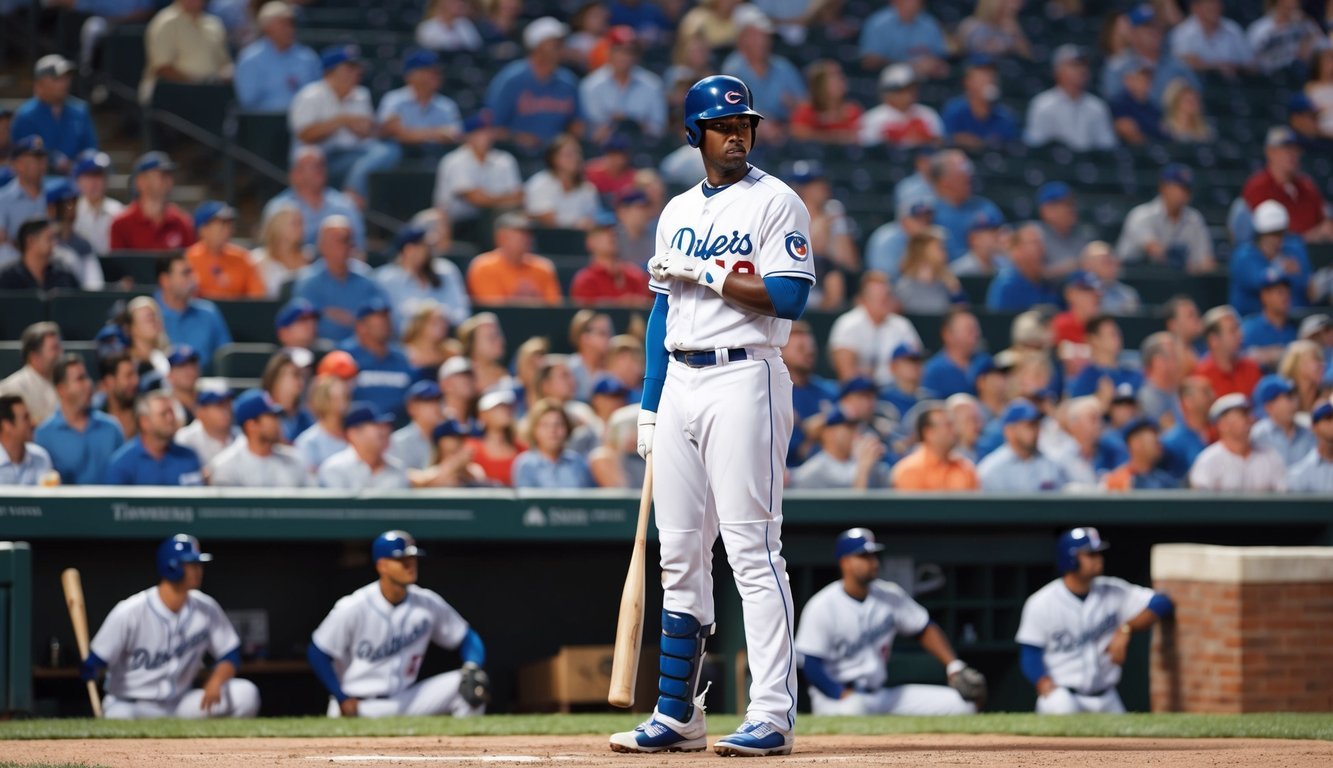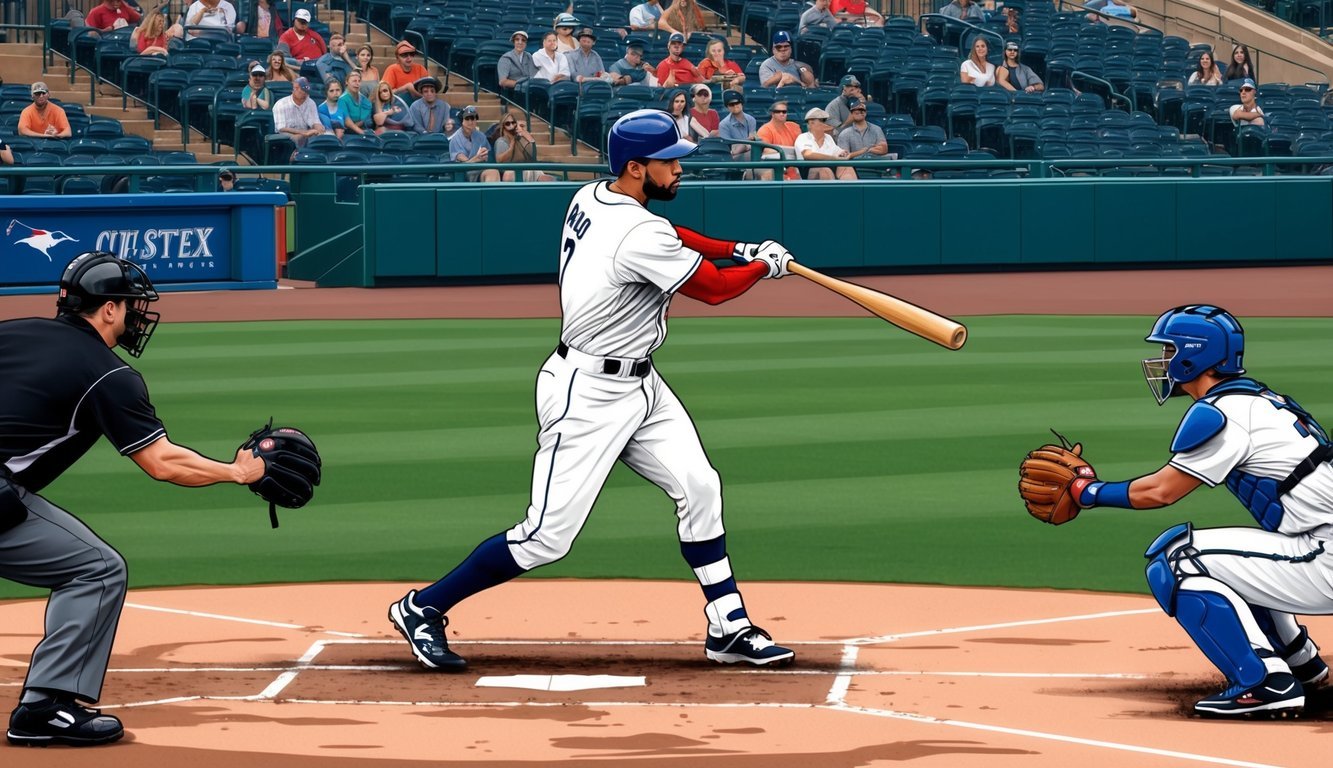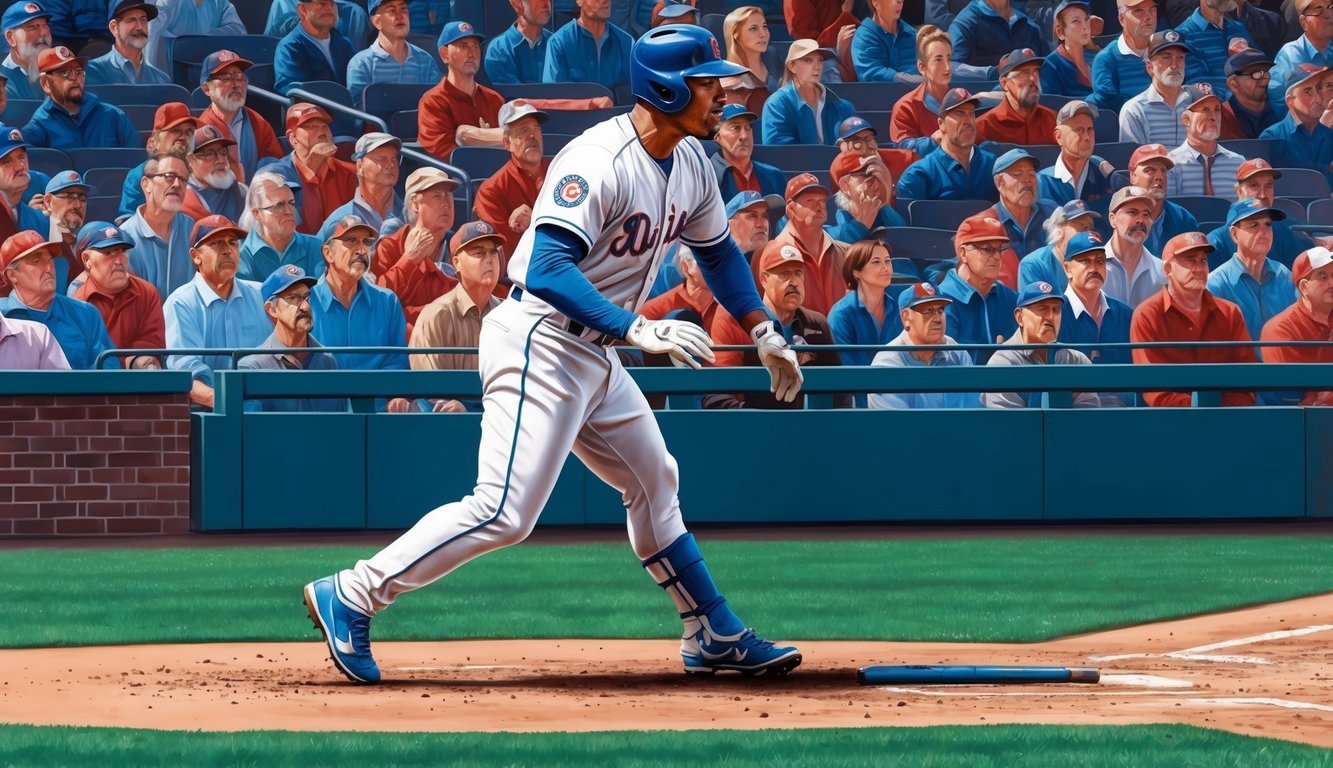Baseball is a game of strategy and skill, where managers constantly seek ways to gain an edge over their opponents.
One powerful tool in their arsenal is the pinch hitter, a substitute batter who can turn the tide of a game in crucial moments. A pinch hitter replaces another in the batting order, typically to gain a strategic advantage or provide a fresh spark to the offense.
Pinch hitters play a unique role in America’s pastime.
They must be ready at a moment’s notice, stepping up to the plate in high-pressure situations with little time to warm up.
These specialized players often possess specific skills that make them valuable in certain scenarios, such as the ability to hit for power against a particular pitcher or a knack for getting on base when the team needs a rally.
The use of pinch hitters adds an extra layer of excitement to baseball games.
Fans eagerly anticipate the manager’s decision to call upon a pinch hitter, knowing it could be a game-changing move.
From clutch home runs to critical walks, pinch hitters have the potential to become instant heroes and etch their names into baseball lore with a single at-bat.
The Basics of a Pinch Hitter
A pinch hitter is a strategic weapon in baseball, used to shake up the game at crucial moments.
This player steps in to bat for another, aiming to provide an offensive boost when it’s needed most.
What Is a Pinch Hitter?
A pinch hitter is a substitute batter who replaces another player in the lineup.
This substitution typically occurs later in the game when a team needs an offensive spark.
The pinch hitter takes over the at-bat for the replaced player, who then leaves the game.
Managers often choose pinch hitters based on their specific skills or matchups against the current pitcher.
These players must be ready to perform under pressure, as they’re often called upon in high-stakes situations.
Pinch hitters are usually selected from the bench players who didn’t start the game.
They get one chance to make an impact, so their preparation and focus are crucial.
The Role in Baseball
Pinch hitters play a vital role in baseball strategy.
They’re often used to:
- Replace pitchers in the batting order
- Provide a better matchup against the current pitcher
- Add a power hitter when runs are needed
- Get a contact hitter when advancing runners is key
Their impact can be game-changing.
A successful pinch hit can tie or win a game, energizing the team and fans.
Managers must time their use carefully, as once a player is replaced, they can’t return to the game.
Pinch hitters need to stay mentally prepared throughout the game.
They might only get one at-bat, but it could be the most important of the game.
Their ability to come in cold and perform makes them valuable assets to any team.
Strategic Use of Pinch Hitters

Managers employ pinch hitters as a tactical weapon to gain an edge in crucial game situations.
Their decisions can swing momentum and potentially determine the outcome of close contests.
Managerial Decisions
Managers carefully weigh several factors when deciding to use a pinch hitter.
They consider the current game situation, inning, score, and number of outs.
The opposing pitcher‘s strengths and weaknesses also play a key role.
Managers look at their bench options and evaluate which player gives them the best chance for success.
They might choose a power hitter to try for a home run or a contact hitter to move runners over.
The player’s recent performance and career stats against that pitcher factor in too.
Sometimes a manager will use a pinch hitter early to spark the offense.
Other times, they’ll save their best bench bat for a high-leverage late-inning situation.
It’s a chess match of strategy and timing.
Platoon Advantage and Matchups
The platoon advantage is a huge consideration when using pinch hitters.
Managers aim to create favorable lefty-righty matchups.
A left-handed batter typically hits better against right-handed pitchers, and vice versa.
Teams often keep specialized platoon players on the bench for these situations.
When the opposing team brings in a new pitcher, it creates an opportunity to counter with a pinch hitter for the platoon advantage.
Managers also look at specific batter-pitcher history.
If a bench player has great career numbers against the current pitcher, they might get the nod as a pinch hitter.
Some hitters simply match up well against certain pitchers’ styles.
The double switch is another strategic move involving pinch hitters.
It allows a manager to change pitchers and bring in a new hitter in a better lineup spot for future at-bats.
Famous Pinch Hitters and Records
Throughout baseball history, certain players have excelled in the specialized role of pinch hitting.
These clutch performers have etched their names in the record books with remarkable achievements.
All-Time Greats
Lenny Harris stands atop the pinch-hitting mountain with an incredible 212 career pinch hits.
His versatility and consistency made him a valuable asset for ten different teams over 18 seasons.
Matt Stairs and Mark Sweeney follow closely behind Harris on the all-time list.
Stairs smashed a record 23 pinch-hit home runs during his career, showcasing his power off the bench.
Smoky Burgess and Gates Brown were renowned pinch-hitters of earlier eras.
Burgess held the career pinch-hit record for years before it was broken.
Brown excelled for the Detroit Tigers, hitting .450 as a pinch-hitter in 1968.
Terry Crowley carved out a 15-year career largely as a pinch-hitting specialist, earning the nickname “The King of Swing.”
Remarkable Records
Joe Cronin and Hal Breeden share an impressive feat – they each hit two pinch-hit home runs in a single doubleheader.
This rare accomplishment has only happened twice in MLB history.
Merv Rettenmund holds the highest on-base percentage (.422) for pinch-hitters with at least 200 at-bats, demonstrating his ability to reach base consistently in high-pressure situations.
The rarest and most exciting pinch-hit achievement is the pinch-hit grand slam.
These dramatic moments can instantly change the outcome of a game and are celebrated in baseball lore.
Baseball Almanac keeps detailed records of pinch-hitting achievements, preserving the legacy of these specialized players who’ve made their mark in limited opportunities.
Key Moments Involving Pinch Hitters

Pinch hitters have played pivotal roles in baseball history, delivering clutch performances that have changed the course of games and even entire seasons.
Their dramatic at-bats often result in unforgettable moments that fans cherish for years to come.
Additionally, pinch hitters are often compared to pinch runners in baseball history, who have also made significant impacts in critical situations.
These players, whether stepping in to steal a base or score a vital run, embody the essence of strategy and quick thinking in the game.
Together, they showcase the depth of talent and the importance of every player on the roster, reminding fans that baseball is a team sport where every role matters.
Iconic Pinch-Hit Home Runs
Some of the most electrifying moments in baseball involve pinch-hit home runs.
These unexpected blasts can instantly shift momentum and turn the tide of a game.
Kirk Gibson’s legendary pinch-hit homer in the 1988 World Series stands out as one of the greatest.
Gibson, barely able to walk due to injuries, limped to the plate in Game 1 against the Oakland A’s. With two outs in the bottom of the ninth, he launched a game-winning two-run shot off Dennis Eckersley.
The image of Gibson pumping his fist as he rounded the bases is etched in baseball lore.
Another memorable pinch-hit homer came from Scott Brosius in the 2001 World Series.
His two-run blast in the bottom of the ninth tied Game 5, sending Yankee Stadium into a frenzy.
World Series and Clutch Situations
Pinch hitters have shined brightest on baseball’s biggest stage – the World Series.
In 1975, Bernie Carbo of the Boston Red Sox hit a game-tying three-run homer in the eighth inning of Game 6, setting the stage for Carlton Fisk’s iconic walk-off in the 12th.
Ed Sprague’s pinch-hit home run in the 1992 World Series helped the Toronto Blue Jays secure their first championship.
His ninth-inning two-run shot in Game 2 erased a one-run deficit and swung the series momentum.
In regular season play, Matt Stairs became known as a premier pinch-hit specialist.
His go-ahead homer for the Phillies in Game 4 of the 2008 NLCS helped propel the team to a World Series title.
Understanding Pinch Hitter Statistics

Pinch hitter statistics provide valuable insights into a player’s effectiveness in this specialized role.
These numbers help teams evaluate performance and make strategic decisions during crucial game moments.
Batting Averages and RBIs
Pinch hitters’ batting averages often differ from their regular stats.
These players face unique challenges, coming in cold and facing unfamiliar pitchers.
A .250 average as a pinch hitter is considered solid performance.
RBIs are crucial for pinch hitters.
Their job often involves driving in runs in high-pressure situations.
Pinch hit RBIs carry extra weight due to their potential game-changing impact.
Pinch hit home runs are rare but exciting events.
They can instantly shift momentum and are celebrated achievements for pinch hitters.
Analyzing a Pinch Hitter’s Value
Success rates help measure a pinch hitter’s effectiveness.
This includes not just hits, but also walks and productive outs that advance runners.
Managers look at platoon splits when choosing pinch hitters.
A left-handed batter might have better stats against right-handed pitchers, influencing when they’re used.
Clutch performance is key.
Some players excel under pressure, making them valuable late-game options.
Teams track how pinch hitters perform in close games or with runners in scoring position.
Versatility adds value.
Pinch hitters who can play multiple positions give managers more flexibility in late-game strategy.
